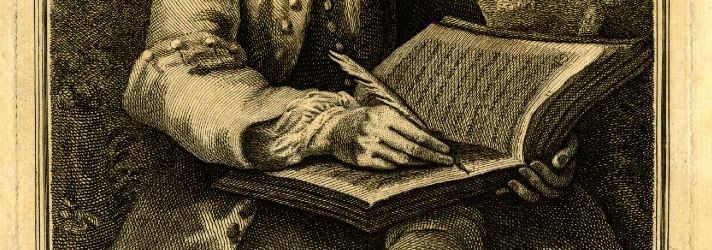- AUTHOR
- Our poets, whether named or anonymous, must have lived or published during the long eighteenth century (1660-1800).
- The poet’s name is given in the entry title bar, and at the beginning of the post.
- For anonymous or pseudonymous poems, if authorship can be reliably determined by available scholarship, the poet’s name will appear in brackets.
- If authorship cannot be reliably determined, the poet’s name as it appears in print will be given within quotation marks.
- “Anonymous” is used for any unsigned poem.
- Where applicable, graduate student editors also write up a short biography of their poet. These are organized alphabetically by surname in the drop-down menu under “Poet Biographies” in the main menu.
- POEM: TITLE
- We aim to offer poems not typically found in modern teaching anthologies of eighteenth-century poetry.
- Poems are chosen based on perceived topical, cultural, historical, and/or aesthetic value.
- The poem title is rendered in quotation marks if it was published in a periodical, single-author volume, miscellany, or any other collection of poems.
- The title is rendered in italics if the poem was published separately, with its own title page.
- POEM: COPY-TEXT
- We strive to use eighteenth-century print sources as our copy-texts.
- However, given our limited archive on campus, and lack of access to a major collection of eighteenth-century books, we allow for the use of digital and microfilm surrogates.
- We are reflexively aware of the problems that can ensue from using these surrogates (a line cropped from the bottom of a page in the photography process; poor reproduction quality). Students using surrogate sources are cautioned about these issues, and instructed to avoid texts that were obviously compromised in the surrogate-making process.
- When a surrogate source is used as copy-text, that fact is noted in brackets at the end of the bibliographical “Source” line of the post, e.g. “[ECCO].”
- This offers transparency for users regarding our limitations, while also allowing us to give credit to a variety of digital sources (e.g. EEBO, ECCO, Hathi Trust, Google Books) that help make a project like this possible.
- POEM: FORMATTING
- We aim to format our poems as closely to the original as possible.
- Orthography: Original spelling is maintained, unless determined to be a printer’s error.
- Punctuation: Original punctuation is maintained, unless determined to be a printer’s error.
- Original stanzaic form and any paragraph or stanza breaks are maintained.
- Original italics are maintained, but not small caps or ligatures (which are not available in WordPress). We substitute full caps for small caps in our formatting, and silently separate ligatures.
- Printer’s Errors: Any discernible printer’s errors are corrected and noted in the apparatus.
- Line numbers are added in increments of 5 to all poems for pedagogical purposes.
- NOTES
- We aim to gloss all allusions, quotations, geographic and historical references, proper names, and archaic language to aid interpretation of the poem.
- Annotations appear immediately below the poem in the “Notes” section.
- All annotations are keyed to line number; the word or phrase in question is italicized, and the gloss immediately follows.
- Sources are given parenthetically in abbreviated or short form (e. g. “(OED)” for Oxford English Dictionary; (EDD) for English Dialect Dictionary; or (Author, Short Title, [date], p. #) for less well-known sources.
- SOURCE
- The “Source” line provides bibliographic and copy-text information.
- TAGS
- Each poem is tagged according to the following categories: author, poetic genre, verse form, and main topic(s) or theme(s). These tags allow users to retrieve, for example, all poems by a particular author, all elegies, all poems in blank verse, or all poems about nature.
- EDITED BY
- In an effort to address the issue of credit where credit is due in long-term digital humanities projects, editors are encouraged to sign their posts at the end.
- In the event that anonymity is desired, an editor is encouraged—following good eighteenth-century practice—to use a pseudonym instead of leaving the line blank.

